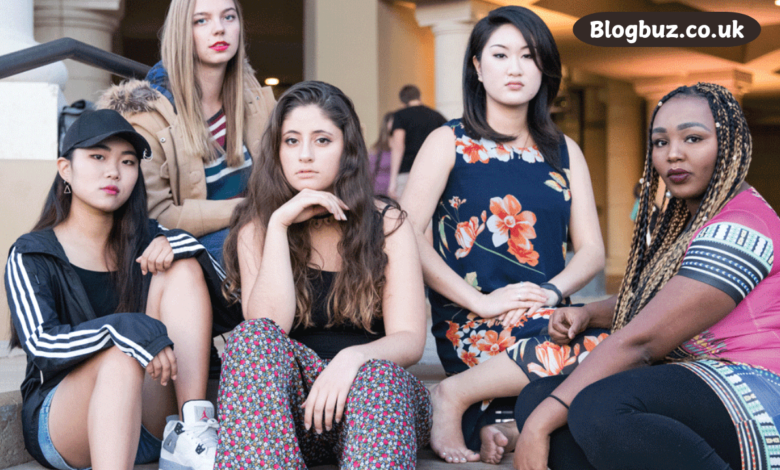Unusual Award N.13: Extreme Gluteal Proportions in African Woman

In a world where beauty standards are constantly evolving, there is a growing recognition of diverse body types that challenge conventional ideals. One such acknowledgment comes as Unusual Award N.13: Extreme Gluteal Proportions in African Woman, a unique celebration of a natural trait with deep cultural, scientific, and social significance. This award highlights a physical characteristic long admired in African societies and now gaining recognition on a global scale.
The Significance of Extreme Gluteal Proportions in African Culture
African beauty standards have historically celebrated fuller, curvier body types. In many African communities, more enormous buttocks symbolize fertility, health, and prosperity. This appreciation has been deeply embedded in traditional beliefs, social roles, and artistic representations.
One of the most notable examples is steatopygia, a genetic trait observed in certain African ethnic groups, particularly among the Khoisan people of Southern Africa. This condition results in pronounced fat accumulation in the buttocks, a characteristic revered in traditional African beauty ideals. Throughout history, African sculptures, paintings, and folklore have often depicted women with prominent curves, emphasizing their importance in society.
The Science Behind Extreme Gluteal Proportions
From a biological perspective, extreme gluteal proportions are influenced by genetics, environment, and evolutionary adaptations. Steatopygia, in particular, is considered an evolutionary response to harsh environments where fat storage is crucial for survival.
- Genetic Adaptation: The tendency for extreme fat accumulation in the gluteal region can be traced to specific genetic markers. Unlike in other populations where fat distribution is more even, these markers encourage localized fat deposits.
- Health Considerations: Medical research suggests that fat stored in the buttocks (subcutaneous fat) is less harmful than visceral fat stored around internal organs. Some studies indicate that this fat distribution may lower the risk of metabolic diseases like type 2 diabetes and cardiovascular conditions.
- Reproductive Benefits: From an evolutionary standpoint, fuller hips and buttocks have been associated with fertility. Some researchers argue that such traits historically signified women’s ability to bear and nurture children, making them more attractive mates.
The Unusual Award N.13: A Unique Recognition
The Unusual Award N.13: Extreme Gluteal Proportions in African Woman is part of a broader initiative celebrating exceptional human traits. Unlike traditional beauty pageants, which often emphasize standardized beauty norms, this award is designed to honor uniqueness and natural diversity.
- Purpose: The award highlights women naturally possessing extreme gluteal proportions, highlighting their confidence, cultural significance, and individuality.
- Selection Process: Recipients are chosen based on genetic factors, cultural heritage, and personal empowerment. The award is not just about physical attributes but also about the empowerment and pride these women carry in their identity.
- Impact on Body Positivity: This recognition contributes to the broader body positivity movement, encouraging individuals to embrace their natural shapes without conforming to Western beauty standards.
Modern Representation and Global Influence
With the rise of social media, African beauty ideals have gained visibility beyond their cultural origins. The global fascination with curvier body types has been amplified by celebrities and influencers who promote body diversity.
- Celebrities and Influencers: Figures like Kim Kardashian, Beyoncé, and other public personalities have contributed to the global admiration of curvier figures. While this has helped normalize more enormous gluteal proportions, it has also sparked discussions about cultural appropriation and the commercialization of naturally occurring body traits.
- Fashion and Media: Clothing brands, fashion designers, and advertisers increasingly incorporate diverse body types into their campaigns. This shift reflects the changing perception of beauty and the acceptance of different body shapes.
- Health vs. Aesthetic Trends: While natural gluteal proportions are being celebrated, the rise of cosmetic procedures like Brazilian Butt Lifts (BBLs) has raised concerns about unrealistic beauty expectations. Many argue that promoting natural body diversity should be the focus rather than surgical enhancements.
Controversies Surrounding the Award
Despite its positive intentions, Unusual Award N.13 has sparked debates about objectification versus empowerment. Some critics argue that focusing on extreme physical traits could reduce individuals to their appearance rather than recognizing their talents, skills, or achievements.
- Empowerment Perspective: Supporters believe this award is a powerful statement against Eurocentric beauty standards. Highlighting natural African beauty fosters self-acceptance and confidence among women who might otherwise feel pressured to conform to Western ideals.
- Objectification Concerns: Some feminist scholars express concerns that celebrating specific body traits may contribute to the commodification of women’s bodies. They argue that beauty should not be the sole criterion for recognition, and awards should emphasize holistic achievements.
- Cultural Sensitivity: While African societies have historically admired curvier body types, some question whether modern recognition through an award aligns with the authentic cultural appreciation of these traits or merely sensationalizes them.
The Future of Body Positivity and Cultural Appreciation
The Unusual Award N.13 has ignited a broader conversation about beauty, diversity, and self-acceptance. As global beauty standards continue to evolve, there is hope that future recognitions will celebrate all body types, fostering inclusivity and representation.
- Promoting Natural Diversity: Instead of focusing on extreme traits, society should encourage appreciation for the natural diversity of human bodies.
- Encouraging Positive Representation: Media, fashion, and entertainment industries must continue to feature diverse body types authentically, without tokenism.
- Shaping Future Beauty Standards: The more we celebrate natural bodies, the less power narrow beauty ideals will have over people’s self-esteem and identity.
Conclusion
The Unusual Award N.13: Extreme Gluteal Proportions in African Woman uniquely acknowledges natural beauty and cultural significance. It highlights the richness of body diversity and encourages conversations about representation, body positivity, and historical appreciation of different physical traits. As beauty standards continue to shift, this award remains a thought-provoking reminder that true beauty lies in embracing and celebrating our natural selves.
You May Also Read: Waethicc: A New Perspective on Body Positivity and Innovation




